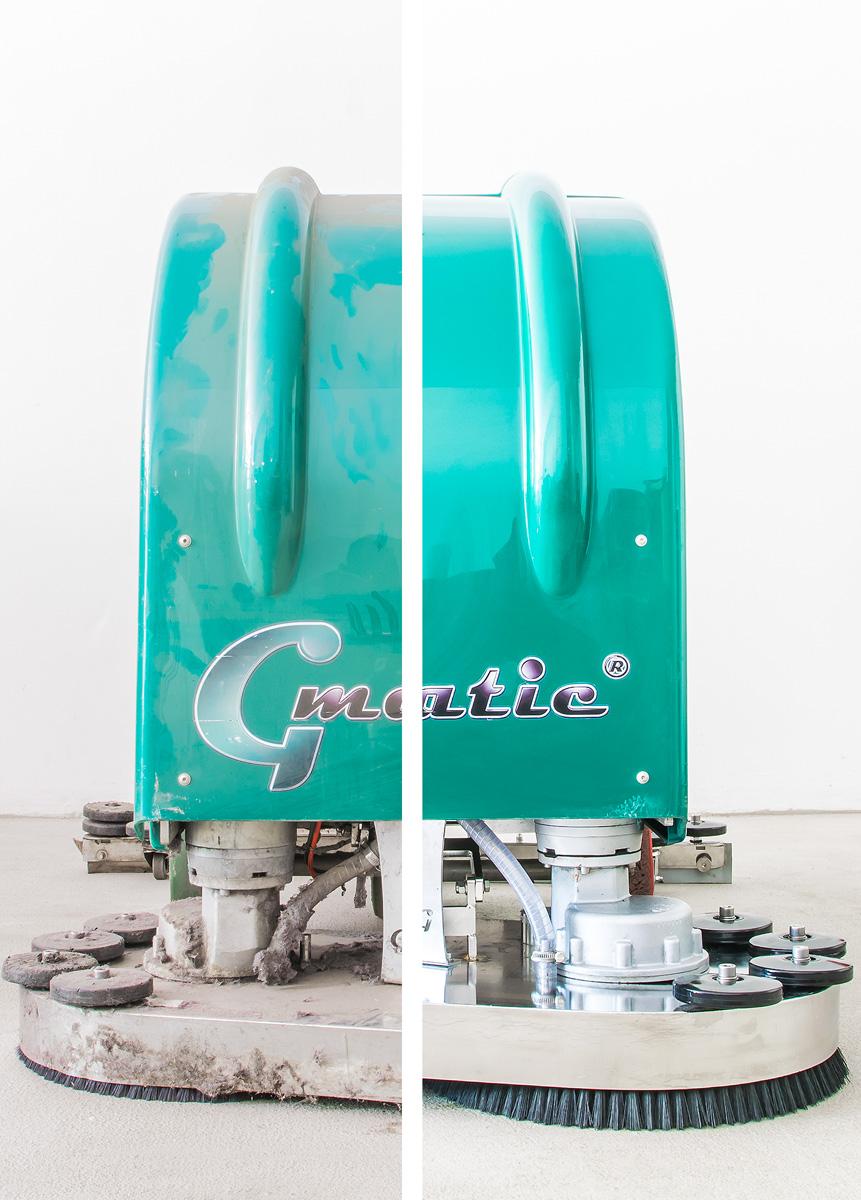 The design of the Gmatic® scrubber dryers features electropolished stainless steel and high-quality components, allowing these machines to be reconditioned, even after many years of intensive operational service. A specially developed pickling solution for stainless steel not only allows deep cleaning but also enables the renewed passivation of all stainless steel surfaces. The modular Gmatic platform strategy enables direct access to components and allows each module to be reworked. All damaged welded joints can be renewed, all bent chassis and add-on parts can be straightened, and all other components can be inspected, repaired and serviced. Replacement is necessary only rarely.
The design of the Gmatic® scrubber dryers features electropolished stainless steel and high-quality components, allowing these machines to be reconditioned, even after many years of intensive operational service. A specially developed pickling solution for stainless steel not only allows deep cleaning but also enables the renewed passivation of all stainless steel surfaces. The modular Gmatic platform strategy enables direct access to components and allows each module to be reworked. All damaged welded joints can be renewed, all bent chassis and add-on parts can be straightened, and all other components can be inspected, repaired and serviced. Replacement is necessary only rarely.
The following study documents the reconditioning results of a Gmatic 80 B 82 scrubber dryer (built in 2009) with before and after pictures. This model provided approx. 3,000 hours of service in the retail industry over the last 7 years and was reconditioned for the first time on 1 July 2016.
The brush head
The brush head is the scrubbing device on each scrubber dryer. Its work environment is characterised by water, aggressive cleaning agents, dirt and collisions with objects. The brushes rotate at high speeds, creating a fine spray around the component. The accumulation of dirt particles is thus inevitable. After all, the brush head determines the cleaning results and the hygiene at the place of use.
- Reconditioning
- Basic cleaning of the stainless steel round blank and brush drives
- Straightening and welding work on the stainless steel round blank
- Passivation of the stainless steel surfaces with a pickling solution for stainless steel
- Exchange of ball bearings and seals
- Protective paint for brush drives
- Oil change for the gear boxes
- Cleaning or replacement of hoses, guide rollers and brushes
The brush head holder
The brush head holder is the guiding unit for the brush head. It provides the necessary mobility and flexibility for cleaning operations close to edges and allows the brushes to be lifted and lowered. Impacts against the round blank of the brush head are transferred straight to the holders, which are therefore subjected to a high mechanical load.
- Reconditioning
- Disassembly of the brush head holder
- Straightening and welding work to restore mobility
- Basic cleaning and passivation with a pickling solution for stainless steel
- Checking the cable ducts, connectors and attachments
The suction cup
The suction cup is the suction device of each scrubber dryer. Not only does it maintain the correct angle of the suction lips on the circulation area, it also feeds the dirty water back into the dirty water tank and ensures that the cleaned surfaces are immediately safe to walk on. It is subjected to mechanical impacts while cleaning near edges: The guide rollers provide protection against damage to the suction cup and furniture. Dirt deposits and wear are bound to occur.
- Reconditioning
- Basic cleaning of the suction cup body
- Straightening and welding work on the suction cup body and clamping strips
- Passivation of the stainless steel surfaces with a pickling solution for stainless steel
- Replacement of the support and guide rollers
- Exchange of the suction lips
- Addition of fastening elements
The suction cup holder
The suction cup holder is the trailed guiding unit of the suction cup and its only connection to the chassis of the scrubber dryer. It provides the necessary flexibility for cleaning operations close to edges and ensures horizontal and vertical mobility. Lateral impacts against the suction cup are absorbed in an evasive manner, which reduces the mechanical load peaks.
- Reconditioning
- Disassembly of the suction cup holder
- Straightening and welding work (if necessary)
- Basic cleaning and passivation of all components with a pickling solution for stainless steel
- Correct reattachment of the suction cup lifter
The control panel
The control panel is the “control centre” for the person operating the scrubber dryer as well as being the attachment for the two drain hoses and the attachment for the steering handle at the same time. The switching elements and cable ducts are located on the inside of the cover part. Due to splashes of water, there is always dirt on the cover part. The steering handle is often “misused” as a lever for getting the tanks out. The damage is striking.
- Reconditioning
- Disassembly of the control panel
- Check and correction of the attachment for the bottom part of the steering handle
- Check of the switching elements, connectors, bushings and cables in terms of their function and corrosion
- Assembly of watertight Superseal connectors
- If necessary: exchange of the control panel (see photos)
- Sealing of the control panel
- Attachment of new drain hoses
The cover parts
The cover parts of a scrubber dryer protect the components below it and ensure that the machine looks both pleasant and professional. The first impression of the scrubber dryer should always be that it is clean, hygienic and well-maintained. It is not always possible to prevent damage caused by ramming during cleaning operation or storage of the scrubber dryer.
- Reconditioning
- Disassembly of the cover parts
- Cleaning of both sides of the cover parts
- Replacement of broken cover parts
- Replacement of adhesive labels
- Assembly and alignment of all cover parts



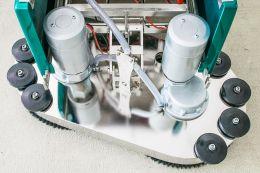
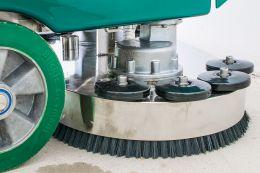
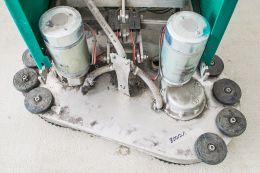
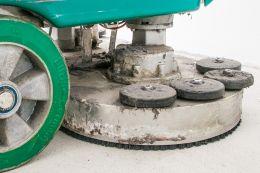
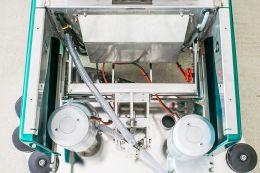
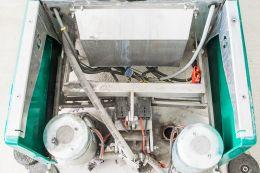
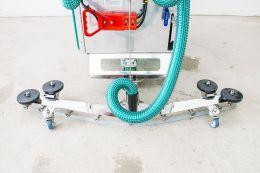
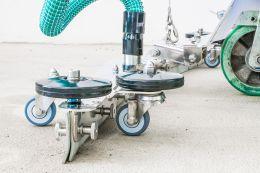
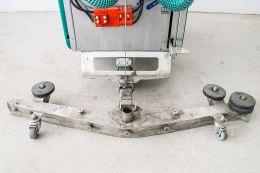
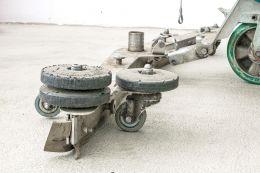
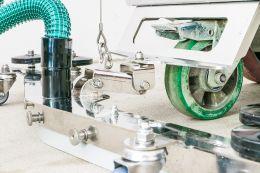
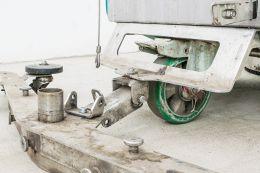
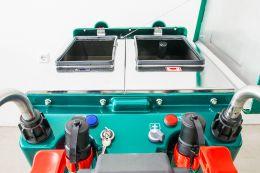
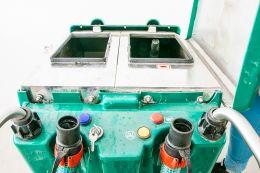
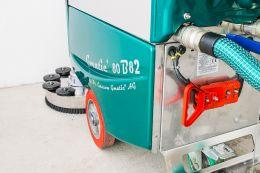
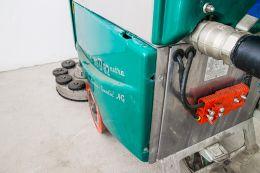
Service & Distribution
Do you have questions about our products or do you need help? We will be happy to assist you.